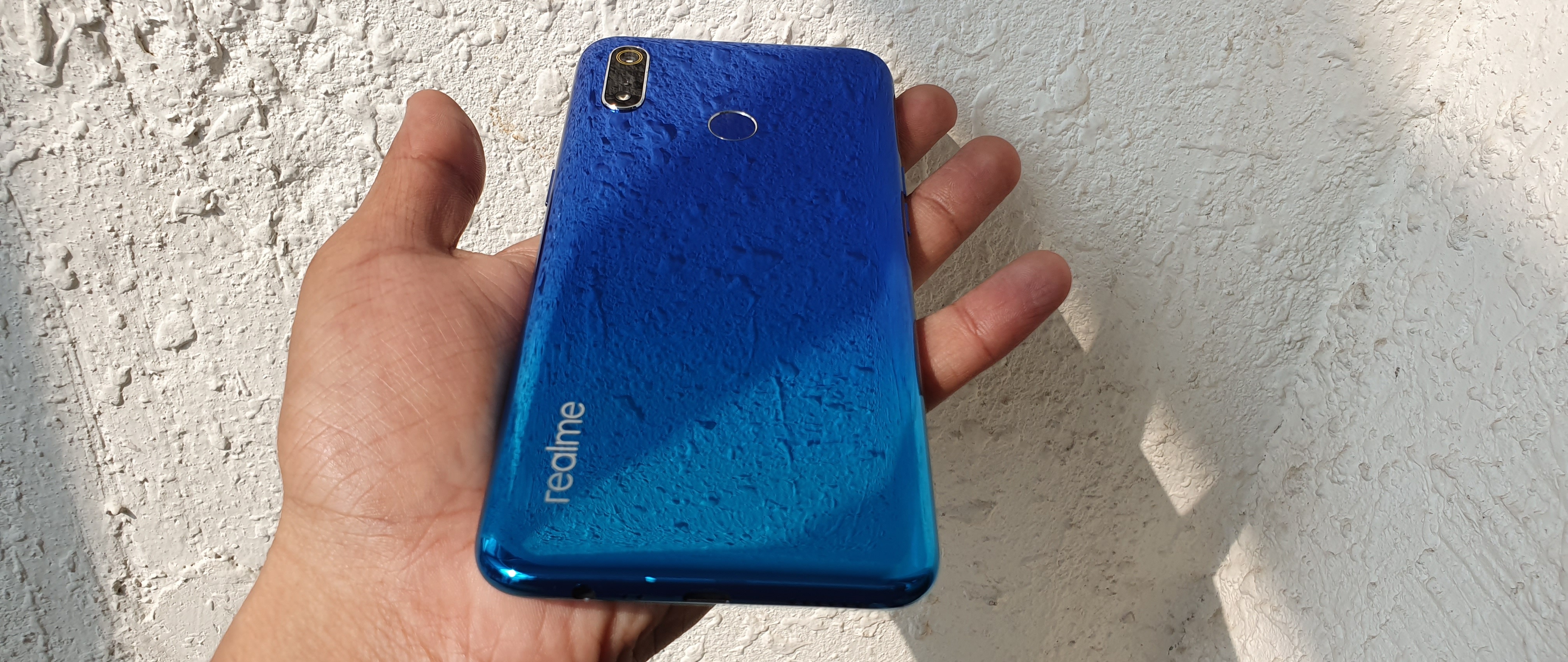TechRadar Verdict
Realme 3 has got its fair share of hits and misses but at the end of the day, its competitive pricing makes it a better alternative to the other phones in this segment.
Pros
- +
Lustrous design
- +
Solid built
- +
Decent cameras on a budget
- +
Price
Cons
- -
Not the best display in its budget
- -
Bloatware
- -
ColorOS 6.0 needs more polishing
Why you can trust TechRadar
In a short span of 9 months, Realme has become a viable competitor in the Indian smartphone market. Spinning off from OPPO, the company went on to release five smartphones in 2018 and received an immensely positive response as far as sales go. Considering the brand was in its infancy, it went on to sell one million units in just five months since launch, a first for any smartphone brand in India.
On Monday, March 4, the smartphone company announced its new product in India, Realme 3. The smartphone targets the sub-Rs 10,000 segments, a market spot that’s been largely captured by Xiaomi.
Is Realme 3 capable of enough to eat a larger chunk of the pie and can it carve a space of its own? We find out.
Realme 3 price and release date

Realme 3 starts at Rs 8,999 for the variant with 3GB RAM and 32GB storage and Rs 10,990 for 4GB of RAM and 64GB storage variant. The phone will go on sale in India starting March 12 on Flipkart.
Design
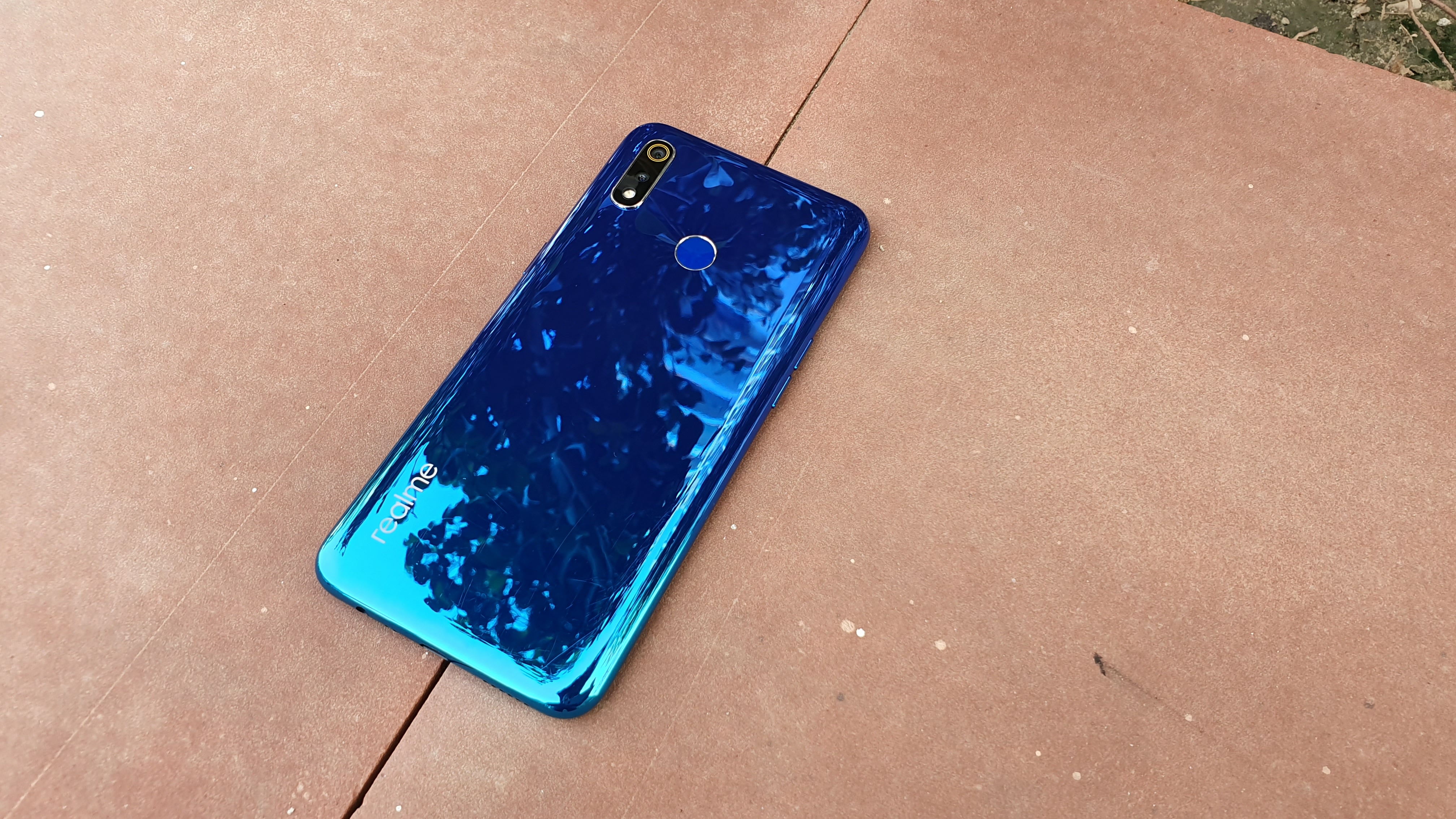
As smartphone manufacturers realized that they could double down on the design of the rear panel of a phone to stand out from the crowd, they began unleashing their creativity and we all have been subjected to numerous different looking phones in the low to mid-range smartphone segment. Realme 3 arrives in such a time with its own take on the gradient-style design on the back, which has become a popular go-to solution for many OEMs. It will be available in three colour options, Dynamic Black, Radiant Blue and Regular Black.
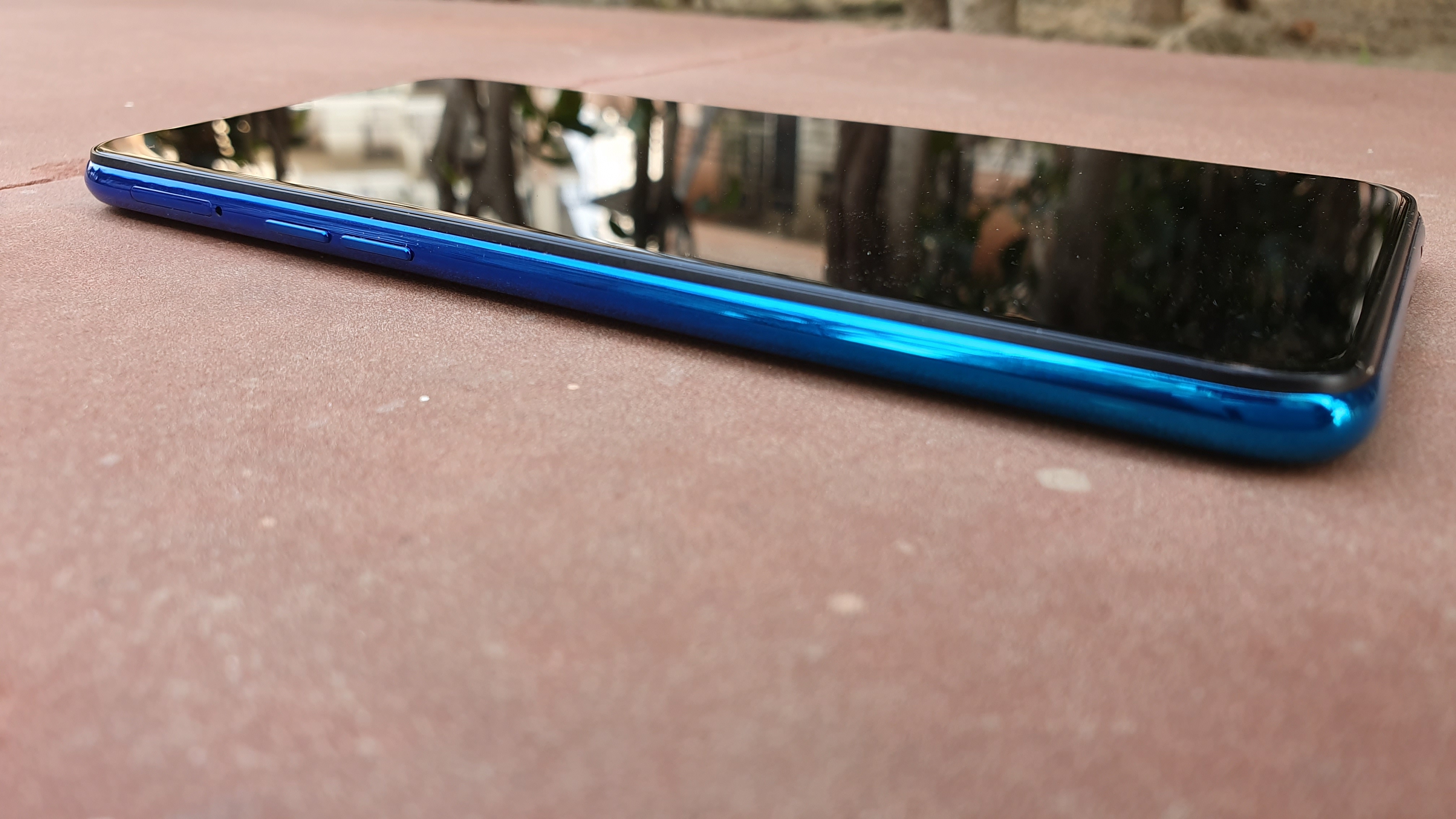
The Realme 3 resorts to a unibody design crafted from a polycarbonate shell which gives it a thickness of 8.3mm and the whole phone weigh around 175g. The unibody design allows for a more comfortable grip when using the phone and its contour edges fit perfectly in the palm of the hand.
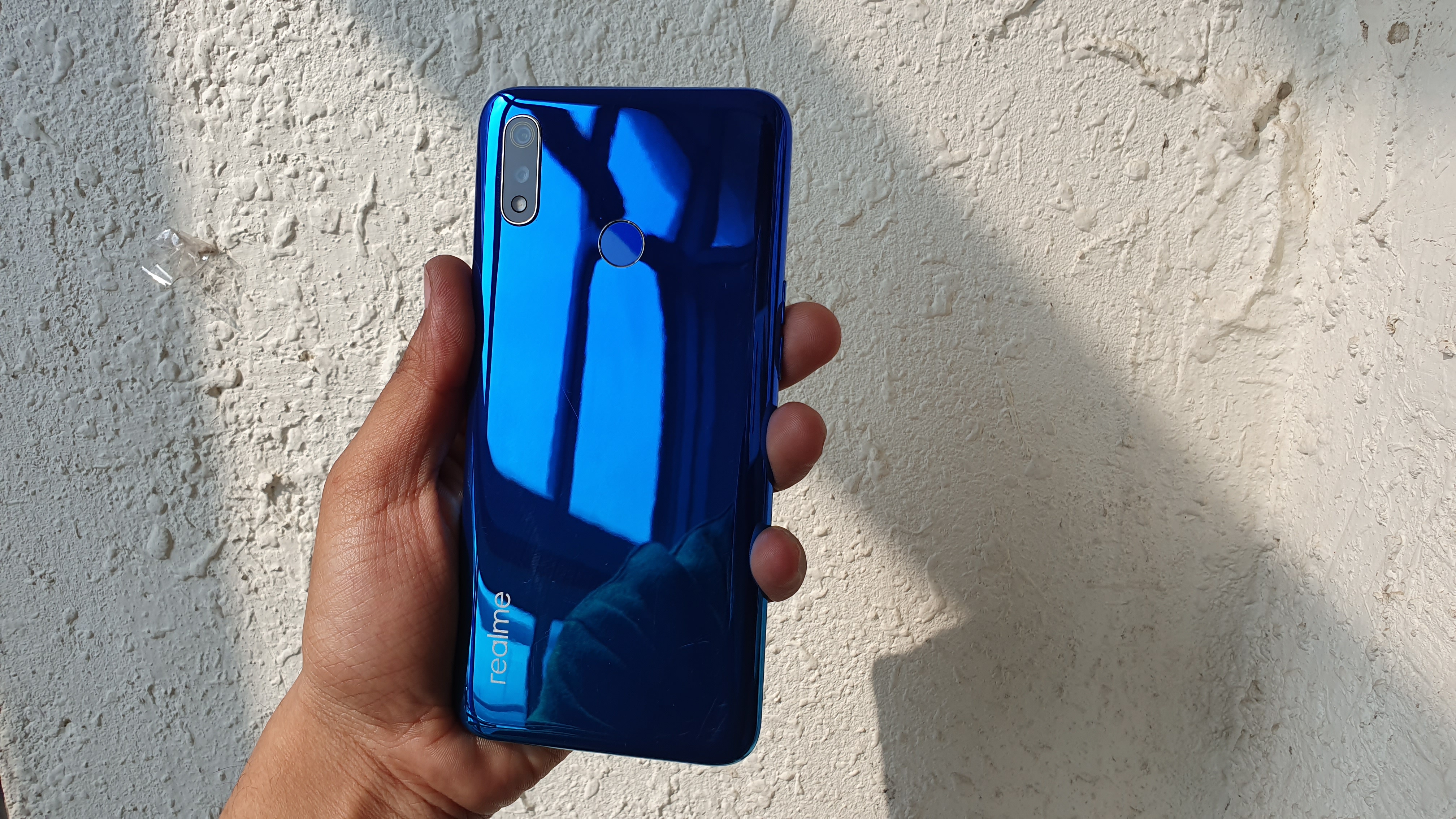
We used the Radiant Blue variant of the Realme 3 but also managed to get our hands on the Dynamic Black color variant. The difference between both of them is that the Radiant Blue version of the phone pops-out more while the Dynamic Black Realme 3 looks more sophisticated and chic.
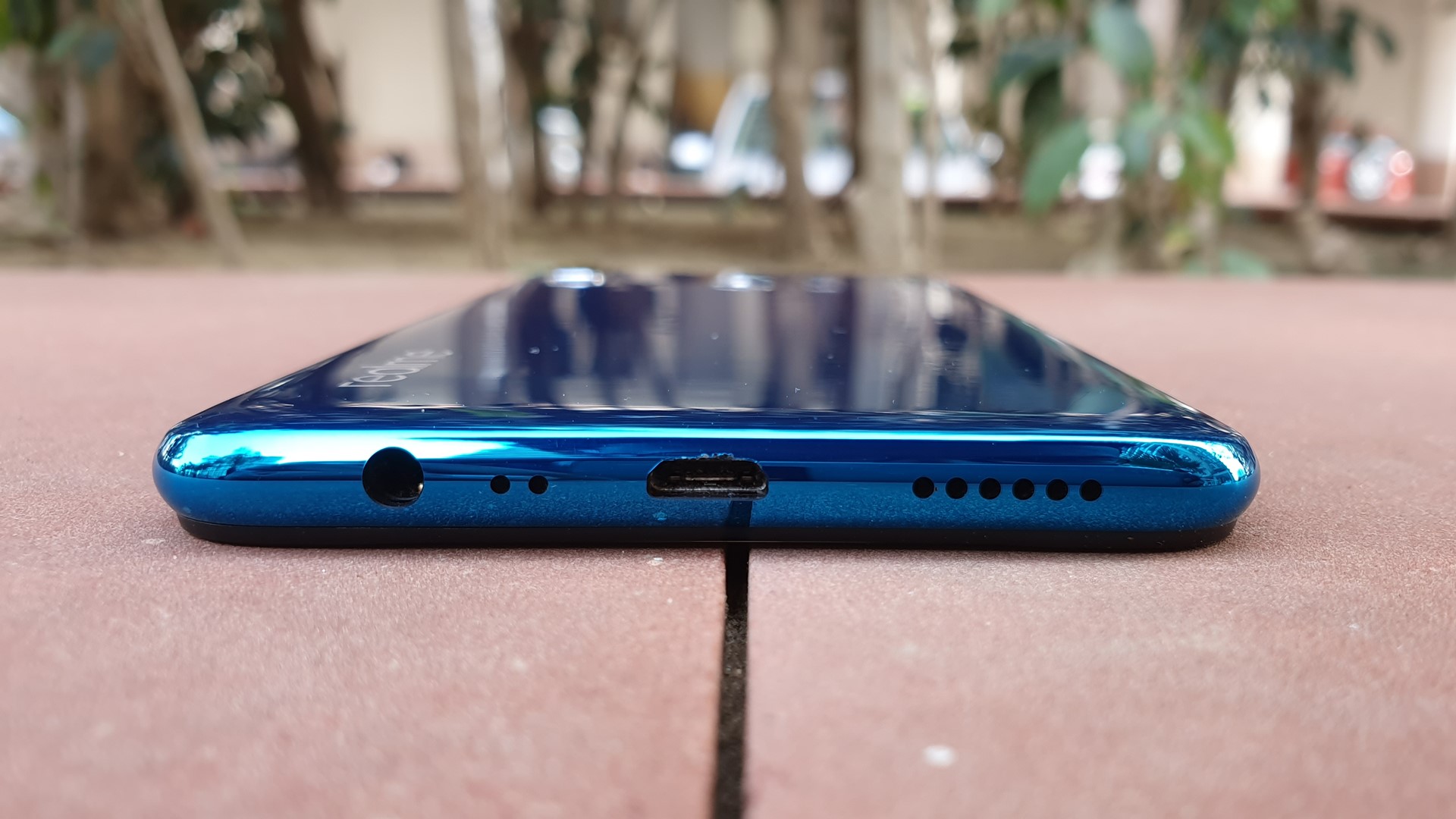
The blue color variant has a coating of a silver layer on the back cover which is the reason behind the extreme reflective nature of this variant. It is further coated using non-conductive vacuum metalizing (NCVM) technique to layer the green and blue inks. The Dynamic Black isn’t so reflective but has a very beautiful gradient that’s a mix of black and blue with a slight tinge of purple. Topping that up with pearl powder gives a kind of depth to the rear panel.
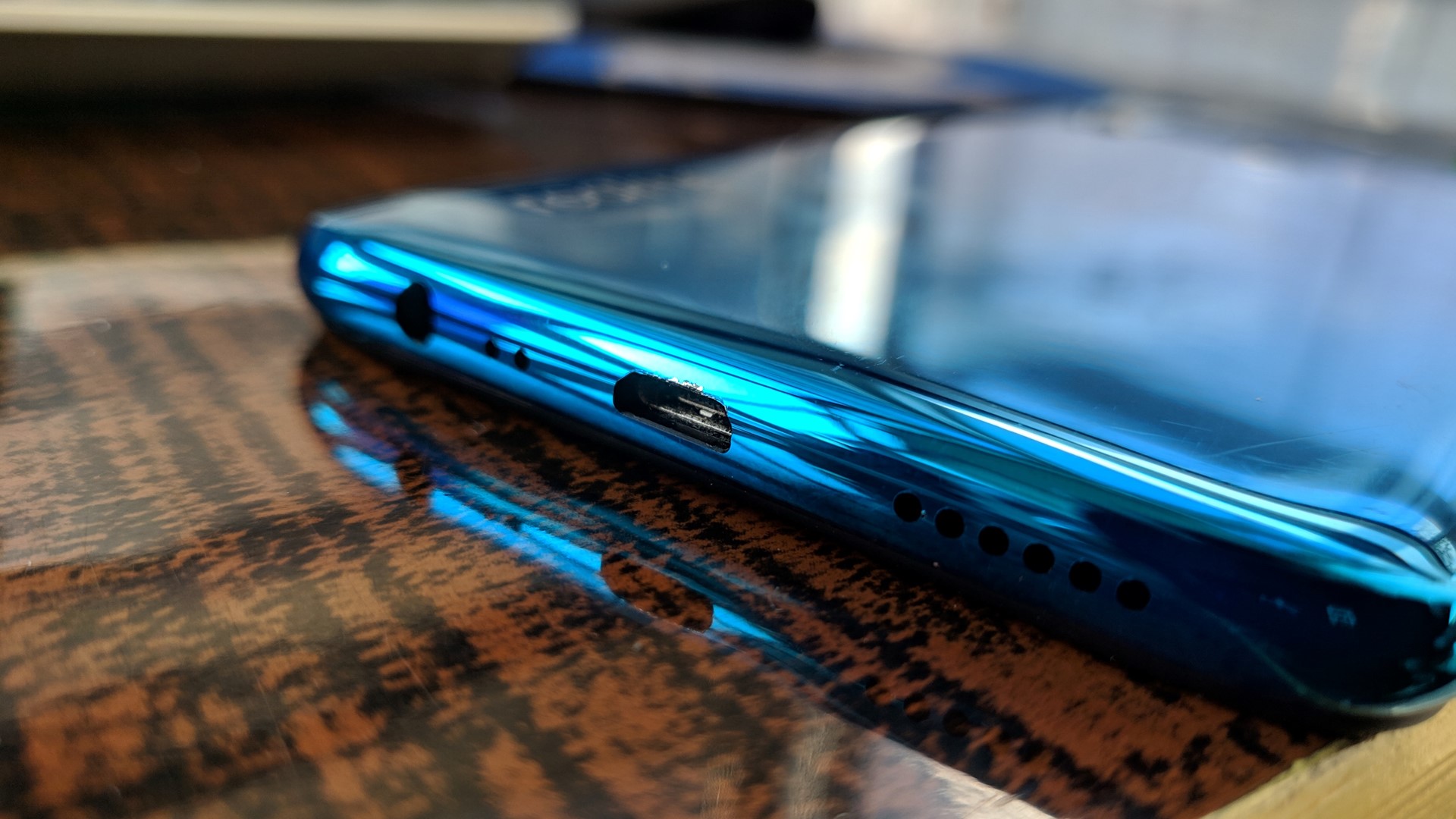
While using the blue variant, we noticed paint chipping off near the USB port and while it didn’t affect a large area, the durability of such paint-jobs do raise a question in the long run.
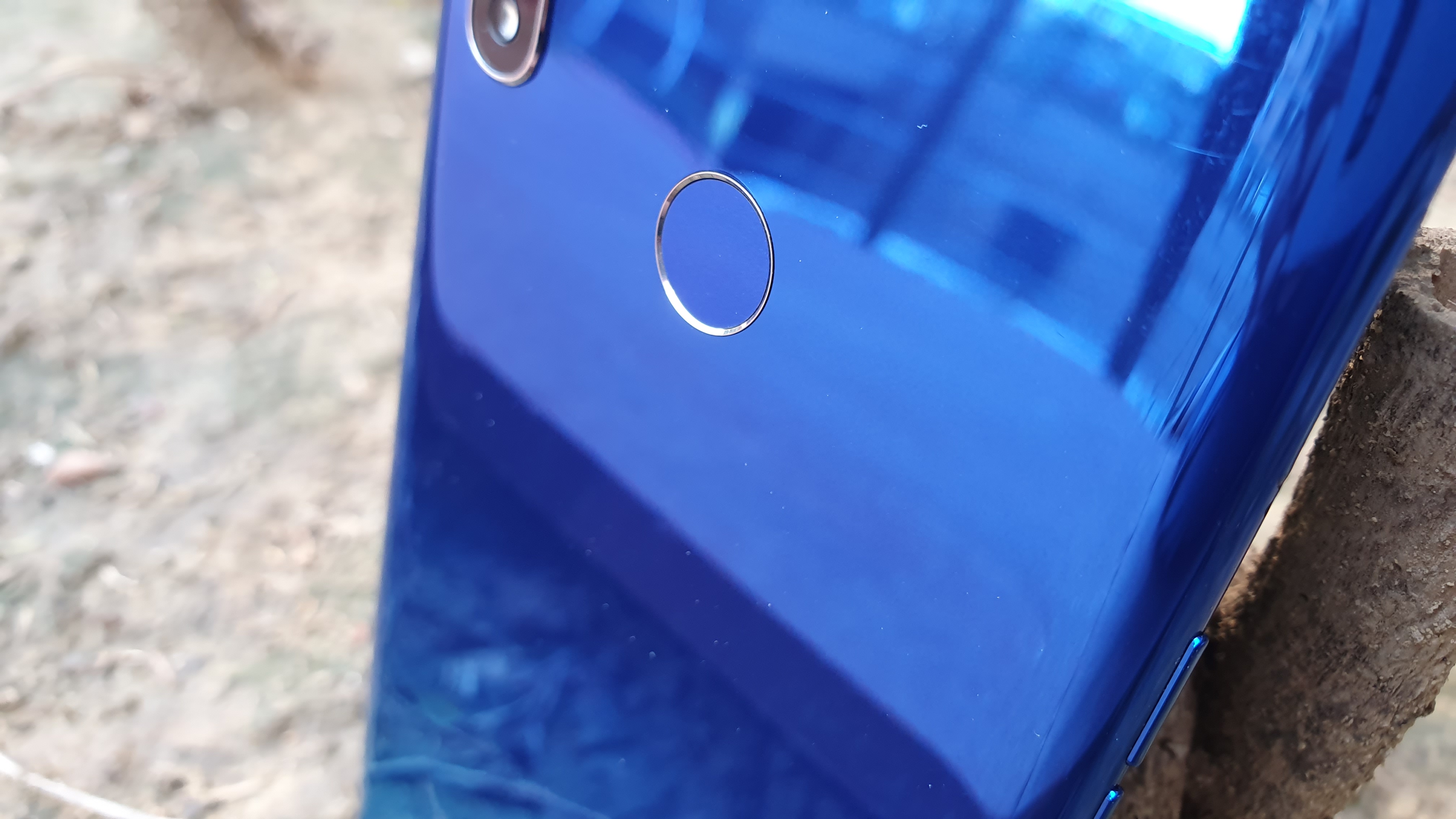
Realme has utilized the CNC milling process to drill port cutouts on the Realme 3. The back of the phone is also home to a camera module and a fingerprint sensor. There are two yellow rings accentuating the primary camera module, making it a more distinctive part of the phone as a whole. The fingerprint scanner does its job efficiently and we didn’t face any issues setting it up.
Overall, the phone feels solid in hand and with the two colour options, the Realme 3 does stand out in terms of looks.
Display
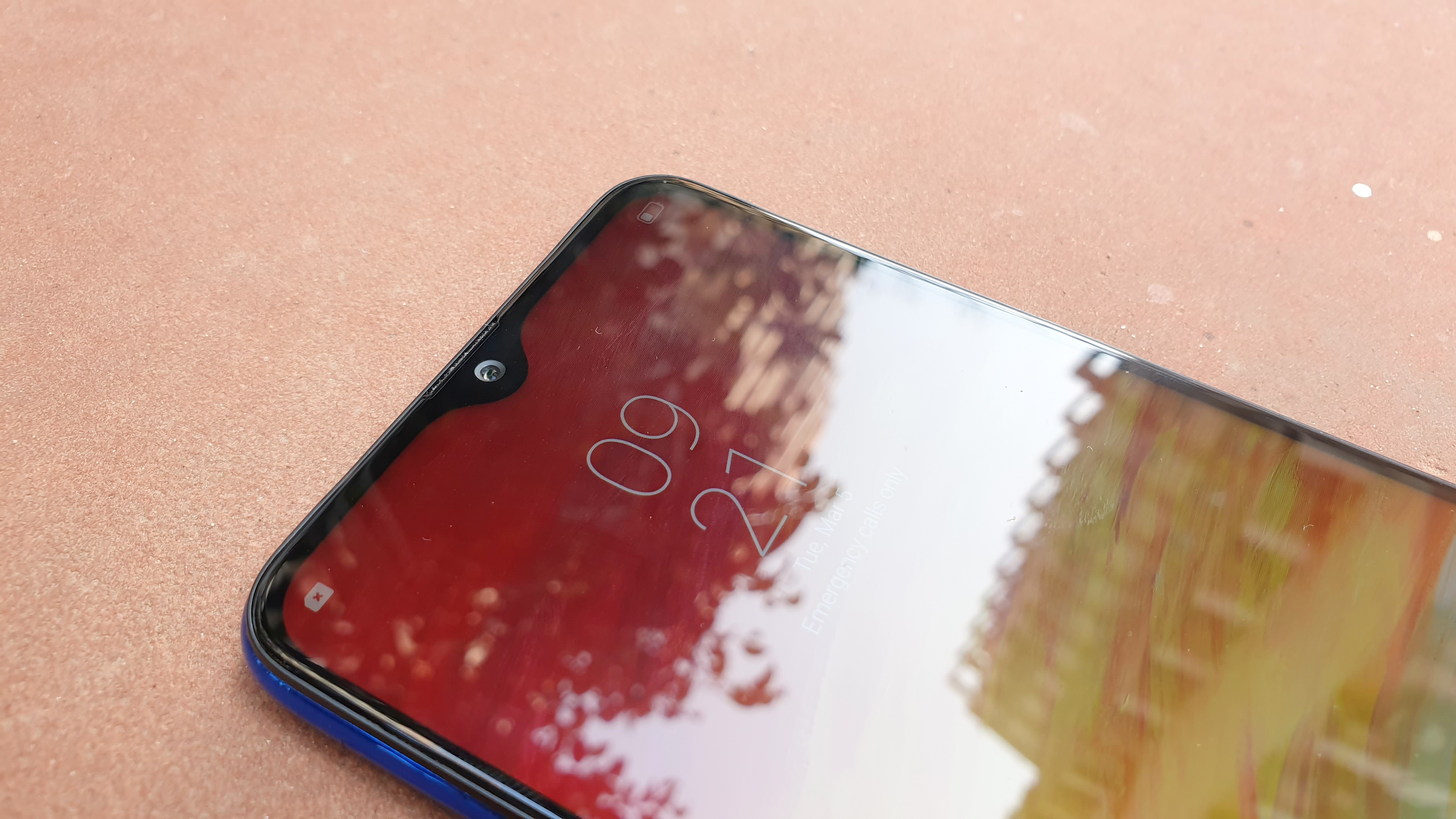
Featuring a 6.22-inch HD+ (1520 x 720 pixels) display topped with Gorilla Glass 3, the Realme 3 continues with the waterdrop-style notch on the front. This gives it a 19:9 aspect ratio and makes for 88.30% screen-to-body ratio.
The bezels, especially the chin is a bit wider than what’s being offered by the competition. In regular use, the display is good enough to watch videos and play games. It produces rich colours, has decent viewing angles but with a slight blue tint running throughout the panel. It’s an HD+ panel which doesn’t allow much clarity, so comparing it with AMOLED is just not fair enough.
The waterdrop-style notch offers more screen estate than the regular notch design. It also adds to the inclusiveness of the display making it appear as a part of the phone.
For its asking price, the display on the Realme 3 is at par with what’s being offered in the market.
- Also Read: Hands on: Redmi Note 7 Pro review
- Siddharth Chauhan is the Consumer Technology Reporter at Digit India. He used to work as an Assistant Editor at TechRadar India
